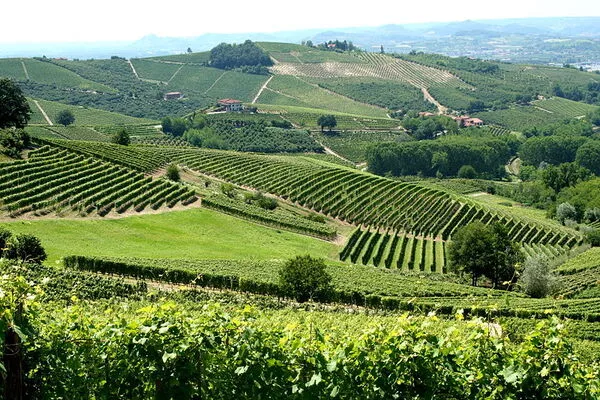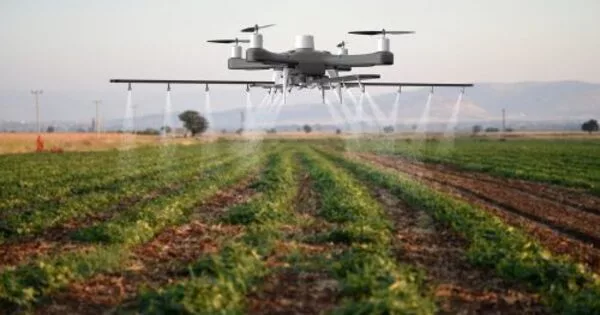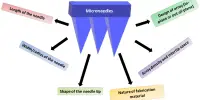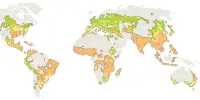Food demand is increasing due to a growing global population and changing diets. Crop yields are leveling off in many parts of the world, ocean health is declining, and natural resources—including soils, water, and biodiversity—are becoming dangerously depleted.
Researchers discovered that while federal subsidies encourage the planting of cover crops to store carbon in agricultural soils, the approach as it is currently practiced can reduce yields in the United States Corn Belt. Their analysis emphasizes the need for better implementation of the practice.
The prospect for American agriculture is enticing: healthier soil, more carbon retained in the ground, less fertilizer runoff, and less reliance on chemicals. According to new Stanford University-led research, the reality of planting cover crops during the off-season – a much-touted and subsidized approach to climate change mitigation – is more complicated. The study, published in Global Change Biology, reveals that cover cropping as it is currently practiced in a major crop-growing region of the United States reduces corn and soybean yields and may result in indirect environmental impacts from increased cultivation to compensate for the losses.
“Use of cover crops is rapidly spreading. We wanted to see how these new practices affect crop yields in the real world, outside of small-scale research plots,” said Jillian Deines, lead author of the study and a postdoctoral scholar in Stanford’s Center on Food Security and the Environment (FSE) at the time of the research.
Agriculture is a difficult business to master, and things rarely go as planned. In our opinion, continuous monitoring, evaluation, and learning are critical components of making agriculture truly sustainable.
David Lobell
“Agriculture is a difficult business to master, and things rarely go as planned,” said senior author David Lobell, the Gloria and Richard Kushel Director of FSE and professor of Earth System Science. “In our opinion, continuous monitoring, evaluation, and learning are critical components of making agriculture truly sustainable.”
Maintaining vegetation cover on agricultural fields during the off-season can result in significant reductions in runoff and nitrogen leakage into streams and groundwater, as well as reduced soil erosion and the need for weed control chemicals. The practice can also be a low-cost strategy for removing carbon dioxide from the atmosphere.
Since 2016, the U.S. Department of Agriculture has subsidized cover cropping with more than $100 million per year due to its potential as a climate change solution and other landscape benefits. The August Inflation Reduction Act includes $20 billion in funding for practices that “directly improve soil carbon, reduce nitrogen losses, or reduce, capture, avoid, or sequester carbon dioxide, methane, or nitrous oxide emissions associated with agricultural production.” Farmers would be more hesitant to invest in cover crops if these subsidies were not available. Cover crops are currently used on only about 5% of fields in the primary corn-growing region of the United States.

Looking at fields from space
The researchers used satellite imagery to examine about 20 million acres of farmland in Iowa, Indiana, Missouri, Ohio, Illinois, and Michigan in the first large-scale, field-level analysis of yield impacts from cover cropping across the US Corn Belt. They examined every field that had grown cover crops for at least three years and compared it to fields that had not been planted with cover crops.
Cover crops reduced corn yields by 5.5% on average and soybean yields by 3.5%. The higher maize yield losses are most likely due to the crop’s increased need for nitrogen fertilizer, a chemical that common cover crops also use, as well as water, which cover crops can deplete ahead of dry growing seasons.
The yield declines equate with a loss of about $40 per acre for corn and $20 per acre for soybeans. That loss, combined with the cost of implementing cover crops — about $40 per acre — makes long-term adoption of the practice challenging, the researchers write.
Despite the sobering findings, the researchers believe cover crops can still benefit farmers and the rest of society. It is possible that the benefits will take some time to become apparent, and farmers will likely improve their implementation skills. More research can help guide that implementation by demonstrating, for example, how alternatives to rye, the most commonly used cover crop in the Corn Belt of the United States, may result in higher primary crop yields in some regions. Ensure that the cover crop is removed with enough lead time before planting primary crops to avoid significant yield penalties.
Policymakers could encourage adoption of cover cropping more strongly in areas that are least likely to experience significant yield penalties, such as those with less susceptibility to water stress.
“Learning by doing is really important, and adjustments are almost always needed both in the sense of farmer practice and government policy,” Lobell said. “The combination of satellite data and powerful machine learning methods can help us be more nimble in making these adjustments.”
















